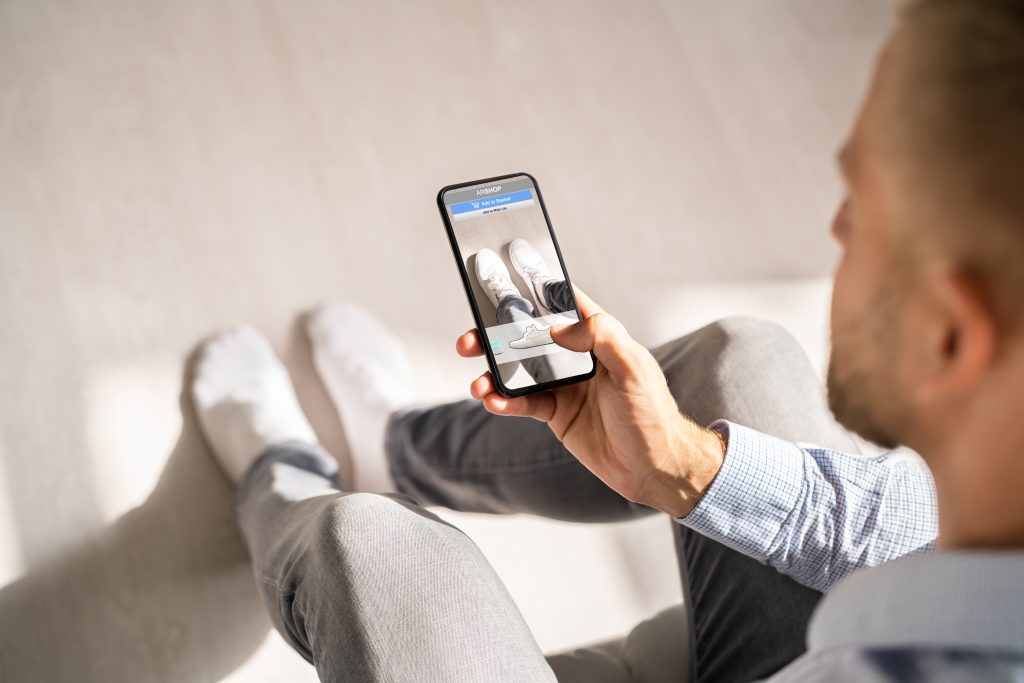
Augmented Reality (AR) is a revolutionary technology that blends the physical world with digital content, creating interactive experiences that enhance our perception of reality. Unlike Virtual Reality (VR), which immerses users in a completely virtual environment, AR overlays digital elements—such as images, animations, and information—onto the real world, viewed through smartphones, tablets, or AR glasses. With its ability to merge the real and virtual, AR has rapidly grown in popularity and found applications across various industries. Let’s explore what AR is and its major areas of impact.
What is Augmented Reality?
Augmented Reality integrates computer-generated content with the physical world in real-time. By using a device’s camera and sensors, AR captures the surrounding environment and places virtual elements on top of it. Popular examples of AR include apps like Pokémon Go, where users see Pokémon characters in real-world settings, and Snapchat filters that modify users’ faces in real-time.
AR enhances the user’s experience by providing context-sensitive information or by blending virtual objects with the actual world, making it a powerful tool for industries ranging from entertainment to education.
Major Areas of Augmented Reality
1. Gaming and Entertainment
AR first gained widespread attention in gaming, and it remains one of the most exciting areas for AR development. Games like Pokémon Go and Harry Potter: Wizards Unite use AR to bring characters and game elements into the real world, allowing users to interact with them in their environment. Beyond gaming, AR is making strides in entertainment through interactive filters on social media platforms like Instagram and Snapchat, where users can apply AR effects to videos and photos in real-time.
2. Retail and E-Commerce
In retail, AR is enhancing the shopping experience by allowing customers to visualize products in their real-world environment before purchasing. For example, furniture companies like IKEA offer AR apps that let users see how furniture pieces would look in their homes. Fashion retailers are also using AR to provide virtual fitting rooms, where customers can try on clothes digitally. This technology helps consumers make more informed decisions and reduces the likelihood of returns.
3. Education and Training
AR is transforming education by making learning more interactive and engaging. With AR, students can explore 3D models, visualize complex concepts, and interact with virtual objects in a real-world context. For example, AR can be used in biology classes to provide a 3D model of the human body, allowing students to explore anatomy in a hands-on way. In professional training, AR is used to simulate real-world scenarios, such as medical procedures or mechanical repairs, providing immersive learning experiences.
4. Healthcare
In healthcare, AR is revolutionizing how doctors diagnose, treat, and educate patients. Surgeons can use AR to visualize a patient’s anatomy during surgery, enhancing precision and reducing risks. AR applications also help medical students practice procedures and improve their skills through interactive simulations. Additionally, AR is being used in patient care, such as in physical therapy, where therapists can use AR to guide patients through exercises or monitor their progress.
5. Real Estate and Architecture
AR is having a profound impact on the real estate and architecture industries by providing clients with virtual tours and walkthroughs of properties. Prospective buyers can use AR to see how different furnishings or modifications would look in a space, or even take virtual tours of properties before visiting them in person. For architects, AR allows them to visualize designs in real-world settings, helping clients understand the scale and layout of buildings before they are constructed. AR can help prevent costly foundation repairs in the future.
6. Marketing and Advertising
AR is transforming marketing by enabling brands to create interactive and immersive campaigns that engage consumers in new ways. Brands like Pepsi and Coca-Cola have used AR in campaigns where users can interact with digital content through their smartphones or in-store displays. AR advertisements are more engaging, allowing users to experience products virtually or see how they would fit into their lives, increasing brand awareness and customer interaction.
7. Navigation and Travel
AR is also being integrated into navigation systems, helping users find their way through real-world environments by overlaying directions onto their surroundings. For instance, Google Maps uses AR to provide real-time walking directions by placing arrows and route indicators on the user’s view of the street. In the travel industry, AR enhances the tourist experience by overlaying historical facts, information, and translations onto real-world landmarks and locations, making sightseeing more informative and engaging.
8. Industrial and Manufacturing
In industrial settings, AR improves efficiency and safety by providing workers with real-time information as they perform tasks. Workers can use AR glasses or smartphones to view instructions, safety guidelines, or diagrams overlaid on machinery, helping them complete tasks more efficiently. AR is also used in maintenance and repair, where technicians can see real-time diagnostics and instructions overlaid on equipment to troubleshoot and fix issues quickly.
Conclusion
Augmented Reality is rapidly becoming an essential tool across a range of industries, enhancing the way we interact with the world around us. From revolutionizing gaming and entertainment to transforming education, healthcare, and retail, AR is bridging the gap between the physical and digital worlds. As AR technology continues to advance, it will unlock even more innovative applications, changing the way we work, learn, shop, and experience the world. The potential of AR is vast, and its integration into everyday life is only just beginning.